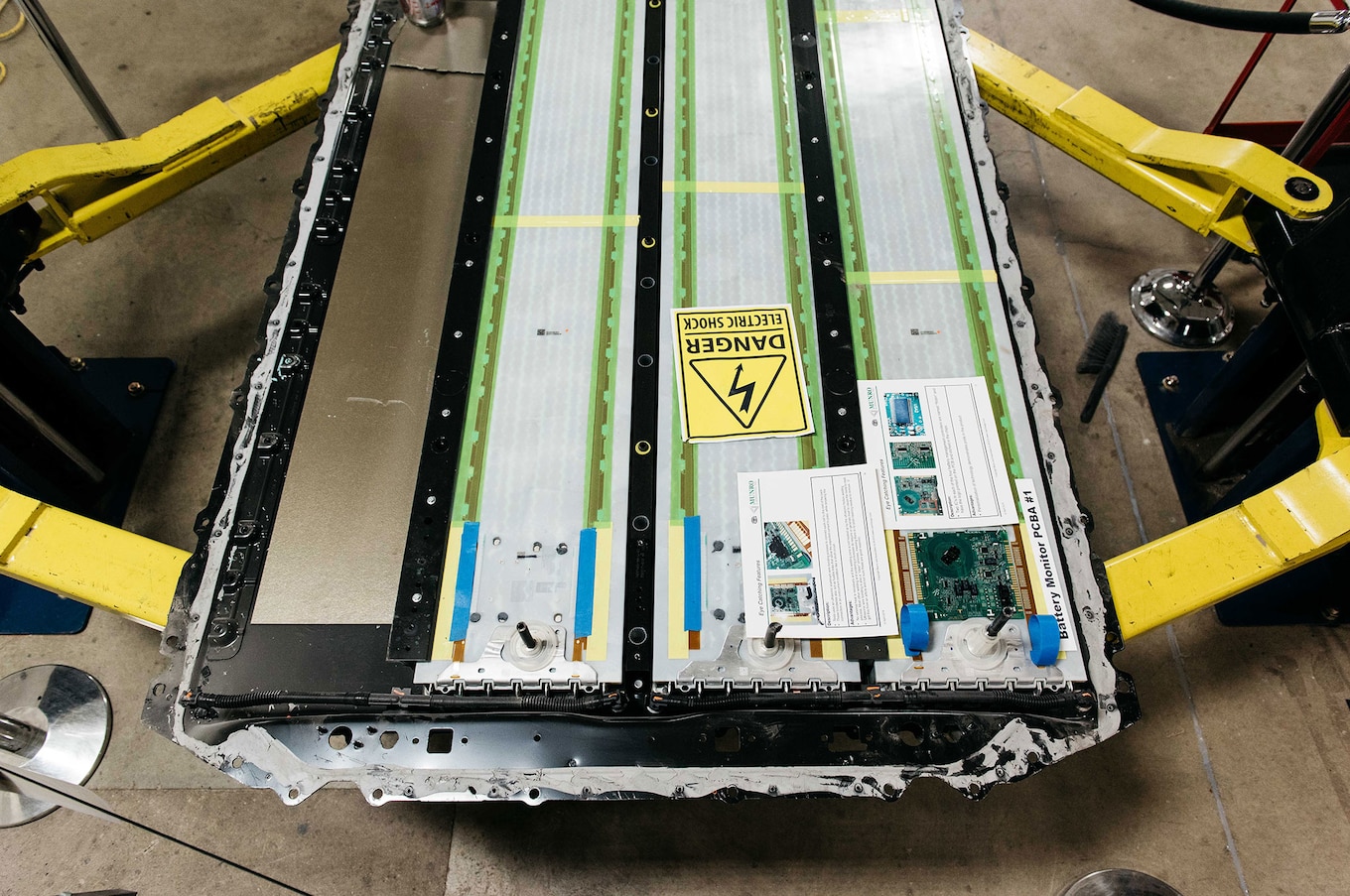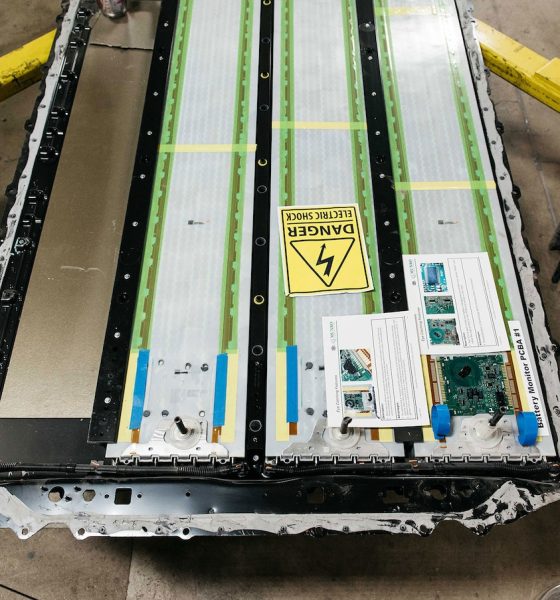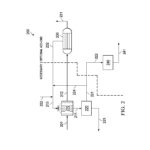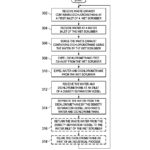

Investor's Corner
Tesla explores safer battery production with novel DCM recovery system patent
In what appears to be yet another step towards its goal of operating the safest car factory in the industry, Tesla has been granted a patent that could pave the way for a safer process in battery production. Published today, the electric car maker’s recent patent describes a system to treat and recycle Dichloromethane (DCM), which is among the materials used in the production of electric car batteries.
DCM is utilized in a variety of industrial processes, particularly in chemical plastic welding, wherein softened plastic pieces or surfaces are welded together. The material is also used to soften plastic sheets for stretching or shaping, and as a solvent to remove unwanted compounds. In Tesla’s case, DCM is among the materials used in the forming of a separator base film for an electric car’s battery system. While DCM is invaluable in manufacturing, though, the material carries some health risks.
Dichloromethane is the least toxic among the simple chlorohydrocarbons, but its high volatility makes it an inhalation hazard nonetheless. Prolonged skin contact with DCM could also result in the material dissolving some of the skin’s fatty tissues, causing irritation or chemical burns. With these risks in mind, the manufacturing industry employs ways to recover DCM. Tesla notes that current systems for DCM treatment and recovery are capital intensive, particularly since the process involves expensive components such as activated carbon beds, condensers, steam boilers and distribution systems, density separation vessels, and waste water treatment systems.
- Tesla’s DCM treatment system. [Credit: US Patent Office]
- A flow chart illustrating operation of an exhaust treatment system for treating a waste exhaust stream containing dichlorom ethane. [Credit: US Patent Office]
Tesla’s diagrams outlining its Dichloromethane recovery system. [Credit: US Patent Office]
Tesla describes conventional DCM treatment systems as follows:
“The DCM itself may then be removed through a heating and/or evaporation process with the exhaust collected. This exhaust containing DCM is then combined with the exhaust from other tools and systems used in the manufacturing process. The combined exhaust may then be fed to a recovery plant to recover DCM. In the recovery plant, the waste exhaust stream is typically treated with activated carbon. This scrubbing process requires high capital expenditure (many expensive components), high operating cost (extensive steam and cooling water consumption which accounts for >20% of total process cost), large footprint requirements, and large amounts of waste water that need to be processed. In order to address these cost and environmental-remediation issues, an improved process for the removal of DCM from exhaust streams is needed.”
Tesla’s take on DCM treatment and recovery utilizes a wet scrubber and a density separator vessel as key components of the system. The wet scrubber in Tesla’s patent has a scrubbing chamber, where water is utilized to scrub the waste exhaust stream containing the DCM. Tesla notes that the wet scrubber could adopt a variety of designs to remove DCM from the waste exhaust stream, including a venturi scrubber design, a condensation scrubber design, an impingement-plate scrubber design, or a packed bed tower design, among others.
Tesla’s use of a density separator vessel is described in the following section from the patent.
“The density separator vessel has an inlet to receive the liquid water and DCM mixture, an outlet to expel DCM, and an outlet to expel waste water. The DCM may be routed back to the industrial process for reuse and/or collected for later use. The waste water may be routed back to the wet scrubber, as shown along (the) waste water return loop. Waste water may also or alternately be routed to waste water treatment system for processing for subsequent treatment by (the) waste water treatment system.
“Typically, a large portion of the waste water is returned to the wet scrubber via (the) waste water return loop and a small portion of the waste water is treated by the waste water treatment system. Even though the waste water may contain small amounts of DCM, the waste water will still retain its ability to scrub the exhaust containing DCM. An advantage of the wet scrubber over the activated carbon beds is that all or most of the water used by the wet scrubber is the waste water from the density separator vessel, resulting in substantial savings of water and energy, and resultantly, substantial cost savings.”
Tesla states that compared to more traditional exhaust treatment systems, the DCM treatment and recovery model outlined in its patent effectively eliminates the use of steam and cooling, while also reducing the amount of throughput needed by a waste water system. With these efficiencies in mind, Tesla notes that it could reduce capital expenditures and operating costs “for the same amount of DCM processed processing.” The increased simplicity of the system and reduced airflow rates are expected to help the company get more savings in both capital expenditures and operating costs as well.
More than a way to optimize its operations, Tesla’s recent patent is also a notable way for the company to keep its battery production lines safer for its employees. Such a system would definitely be invaluable for the company, particularly as Tesla is now preparing the Model 3 for a global rollout. With the Model 3 ramp ever-expanding, and with high-volume vehicles like the Model Y and possibly the Tesla pickup truck in the pipeline, optimizations such as a better DCM treatment and recovery system are all but necessary.
Tesla’s recently published patent on its DCM treatment system could be accessed here.

Investor's Corner
Tesla stock closes at all-time high on heels of Robotaxi progress

Tesla stock (NASDAQ: TSLA) closed at an all-time high on Tuesday, jumping over 3 percent during the day and finishing at $489.88.
The price beats the previous record close, which was $479.86.
Shares have had a crazy year, dipping more than 40 percent from the start of the year. The stock then started to recover once again around late April, when its price started to climb back up from the low $200 level.
This week, Tesla started to climb toward its highest levels ever, as it was revealed on Sunday that the company was testing driverless Robotaxis in Austin. The spike in value pushed the company’s valuation to $1.63 trillion.
Tesla Robotaxi goes driverless as Musk confirms Safety Monitor removal testing
It is the seventh-most valuable company on the market currently, trailing Nvidia, Apple, Alphabet (Google), Microsoft, Amazon, and Meta.
Shares closed up $14.57 today, up over 3 percent.
The stock has gone through a lot this year, as previously mentioned. Shares tumbled in Q1 due to CEO Elon Musk’s involvement with the Department of Government Efficiency (DOGE), which pulled his attention away from his companies and left a major overhang on their valuations.
However, things started to rebound halfway through the year, and as the government started to phase out the $7,500 tax credit, demand spiked as consumers tried to take advantage of it.
Q3 deliveries were the highest in company history, and Tesla responded to the loss of the tax credit with the launch of the Model 3 and Model Y Standard.
Additionally, analysts have announced high expectations this week for the company on Wall Street as Robotaxi continues to be the focus. With autonomy within Tesla’s sights, things are moving in the direction of Robotaxi being a major catalyst for growth on the Street in the coming year.
Elon Musk
Tesla needs to come through on this one Robotaxi metric, analyst says
“We think the key focus from here will be how fast Tesla can scale driverless operations (including if Tesla’s approach to software/hardware allows it to scale significantly faster than competitors, as the company has argued), and on profitability.”

Tesla needs to come through on this one Robotaxi metric, Mark Delaney of Goldman Sachs says.
Tesla is in the process of rolling out its Robotaxi platform to areas outside of Austin and the California Bay Area. It has plans to launch in five additional cities, including Houston, Dallas, Miami, Las Vegas, and Phoenix.
However, the company’s expansion is not what the focus needs to be, according to Delaney. It’s the speed of deployment.
The analyst said:
“We think the key focus from here will be how fast Tesla can scale driverless operations (including if Tesla’s approach to software/hardware allows it to scale significantly faster than competitors, as the company has argued), and on profitability.”
Profitability will come as the Robotaxi fleet expands. Making that money will be dependent on when Tesla can initiate rides in more areas, giving more customers access to the program.
There are some additional things that the company needs to make happen ahead of the major Robotaxi expansion, one of those things is launching driverless rides in Austin, the first city in which it launched the program.
This week, Tesla started testing driverless Robotaxi rides in Austin, as two different Model Y units were spotted with no occupants, a huge step in the company’s plans for the ride-sharing platform.
Tesla Robotaxi goes driverless as Musk confirms Safety Monitor removal testing
CEO Elon Musk has been hoping to remove Safety Monitors from Robotaxis in Austin for several months, first mentioning the plan to have them out by the end of 2025 in September. He confirmed on Sunday that Tesla had officially removed vehicle occupants and started testing truly unsupervised rides.
Although Safety Monitors in Austin have been sitting in the passenger’s seat, they have still had the ability to override things in case of an emergency. After all, the ultimate goal was safety and avoiding any accidents or injuries.
Goldman Sachs reiterated its ‘Neutral’ rating and its $400 price target. Delaney said, “Tesla is making progress with its autonomous technology,” and recent developments make it evident that this is true.
Investor's Corner
Tesla gets bold Robotaxi prediction from Wall Street firm
Last week, Andrew Percoco took over Tesla analysis for Morgan Stanley from Adam Jonas, who covered the stock for years. Percoco seems to be less optimistic and bullish on Tesla shares, while still being fair and balanced in his analysis.

Tesla (NASDAQ: TSLA) received a bold Robotaxi prediction from Morgan Stanley, which anticipates a dramatic increase in the size of the company’s autonomous ride-hailing suite in the coming years.
Last week, Andrew Percoco took over Tesla analysis for Morgan Stanley from Adam Jonas, who covered the stock for years. Percoco seems to be less optimistic and bullish on Tesla shares, while still being fair and balanced in his analysis.
Percoco dug into the Robotaxi fleet and its expansion in the coming years in his latest note, released on Tuesday. The firm expects Tesla to increase the Robotaxi fleet size to 1,000 vehicles in 2026. However, that’s small-scale compared to what they expect from Tesla in a decade.
Tesla expands Robotaxi app access once again, this time on a global scale
By 2035, Morgan Stanley believes there will be one million Robotaxis on the road across multiple cities, a major jump and a considerable fleet size. We assume this means the fleet of vehicles Tesla will operate internally, and not including passenger-owned vehicles that could be added through software updates.
He also listed three specific catalysts that investors should pay attention to, as these will represent the company being on track to achieve its Robotaxi dreams:
- Opening Robotaxi to the public without a Safety Monitor. Timing is unclear, but it appears that Tesla is getting closer by the day.
- Improvement in safety metrics without the Safety Monitor. Tesla’s ability to improve its safety metrics as it scales miles driven without the Safety Monitor is imperative as it looks to scale in new states and cities in 2026.
- Cybercab start of production, targeted for April 2026. Tesla’s Cybercab is a purpose-built vehicle (no steering wheel or pedals, only two seats) that is expected to be produced through its state-of-the-art unboxed manufacturing process, offering further cost reductions and thus accelerating adoption over time.
Robotaxi stands to be one of Tesla’s most significant revenue contributors, especially as the company plans to continue expanding its ride-hailing service across the world in the coming years.
Its current deployment strategy is controlled and conservative to avoid any drastic and potentially program-ruining incidents.
So far, the program, which is active in Austin and the California Bay Area, has been widely successful.










